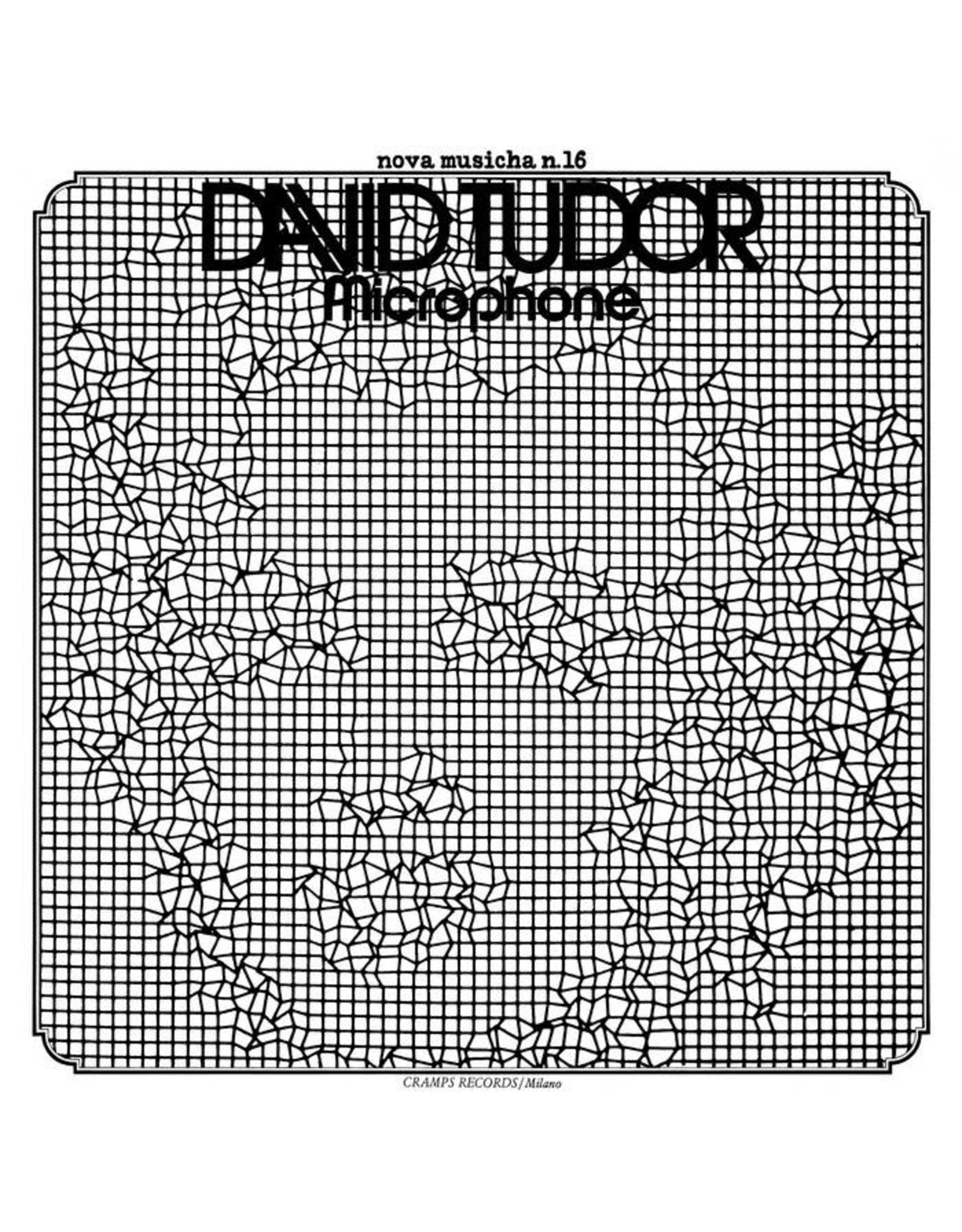Tudor, David: Microphone LP
| Availability: | In stock |
David Eugene Tudor (January 20, 1926 – August 13, 1996) was an American pianist and composer of experimental music. Originally an organist, he went on to become one of the leading performers of avant-garde piano music, giving first or early performances of works by, to name a few, Pierre Boulez, Morton Feldman, Karlheinz Stockhausen, Christian Wolff, and La Monte Young. Tudor is particularly associated with John Cage, who wrote a number of compositions for him. His solo record Microphone was originally released on the Italian Cramps Records label as the 16th volume of the Nova Musicha series dedicated to contemporary avant-garde composers, Microphone is now made available again on Dialogo in a faithful reproduction of the original gatefold cover artwork, including also an inner sleeve with the English translation of the liner notes.
David Tudor was born in Philadelphia in 1926. He studied organ and theory with H. William Hawke, piano with Irma Wolpe Rademacher, analysis and composition with Stefan Wolpe. He began his concert activity as an organist. He has been known as the most important avant-garde pianist since the day he performed, to great acclaim, the American debut of Pierre Boulez’s Deuxieme Sonate pour Piano (1950), and subsequently introduced the works of Earle Brown, Sylvano Bussotti, John Cage, Morton Feldman, Karlheinz Stockhausen and Christian Wolff to a larger audience.
At the beginning of the 1960s, he and Cage switched to live electronic music as opposed to music performed in the studio.
As a composer, Tudor relies on technological tools that are both flexible and complex: he uses mostly modular electronic devices, many of which he built himself. His method requires the choice of specific electronic components and transducers, whose interconnections define both composition and performance. The sound materials he employs unfold through broad movements in time and space, with many of his compositions associated with visual sources: light systems, dance, television, theatre, film or 4-colour laser projections.
- - -
The only source of Microphone’s sound is the modulation of a microphone feedback produced in a distant echo chamber. The incidence and duration of the sounds are produced by the action
of extremely close (narrow band) peak/notch filters (used in both modes), inserted into the lead signal. Each of the 9 versions is performed by the composer and simultaneously recorded on four tracks. Then the four tracks are spliced onto two, using a pan-matrix. The final product is a library of 9 stereo tapes, each about 32 min. long, which can be used in any combination, for live performances or for electronic installations. In these performances the tapes are played and stopped at any point, rewound and played again, altered in amplitude and/or equalisation, rotated on any given channel, etc., at will, for any period of time.
A live performance of Microphone (for instance without tapes) can be achieved by employing (a minimum of 4) performers using duplication systems, each one with 2 speakers. This 1973 instantiation of Microphone covers a work originally conceived for the Pepsi Pavilion
of Expo ‘70, in Osaka, Japan. Conceptually, the original work derives from discoveries made through the composer’s collaboration in the design of the Pavilion’s acoustic system. Sound diffusion was achieved through the use of 37 loudspeakers placed in a rhomboid grid system
covering 3/4 of the sphere.
The original tapes for Microphone were recorded in May 1973, at the Mills College Centre for Contemporary Music, using funds from their multi-track recording research project.
The recordings were conducted by Robert Sheff, with assistance from John Bischoff.


